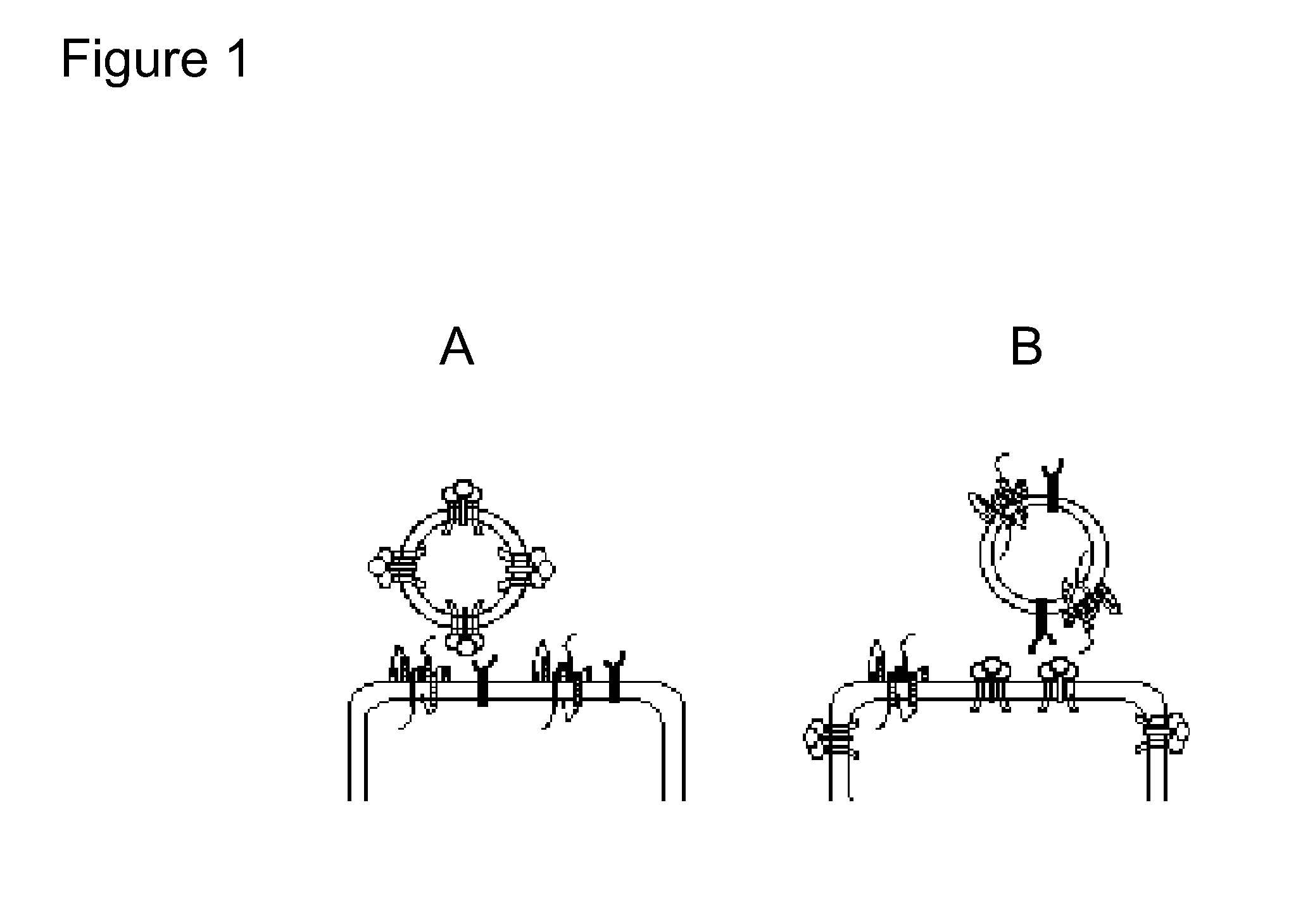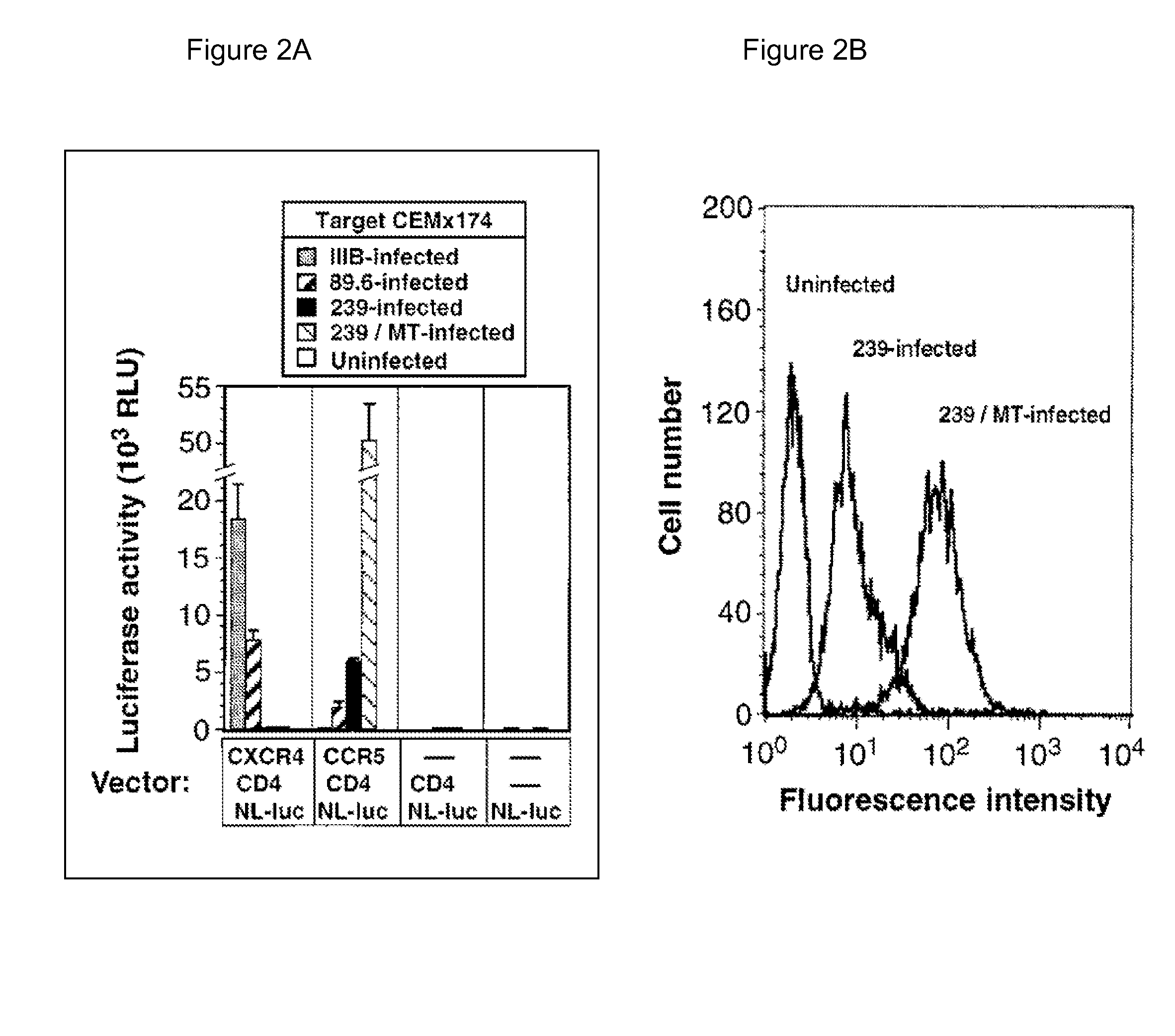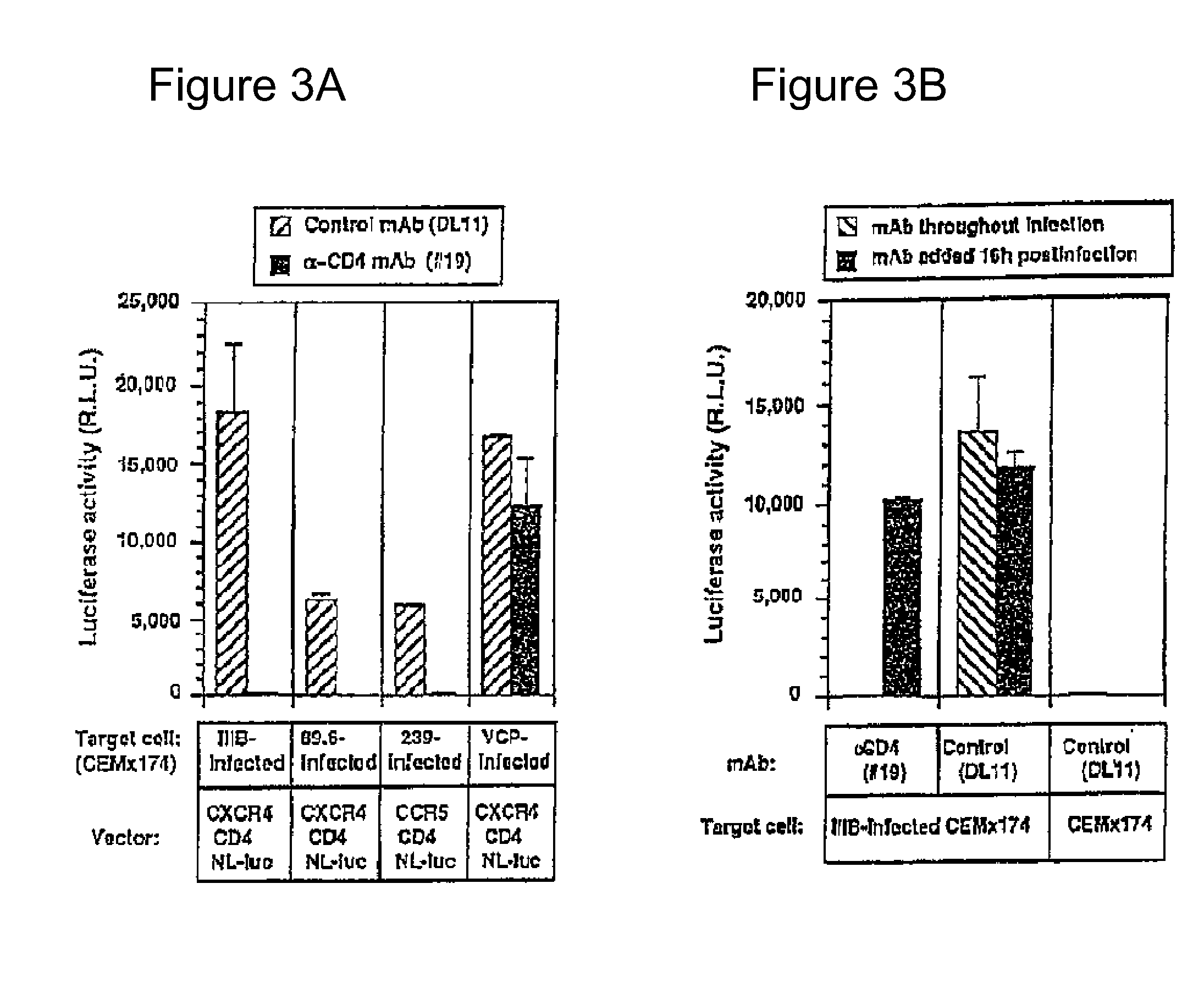Lipoparticle comprising a protein and methods of making and using the same
a technology of lipoparticles and proteins, applied in the field of lipoparticles comprising proteins, can solve the problems of inability to produce virus particles comprising host cell receptors or other surface proteins while preserving the biological function of the molecule, difficult to measure the direct binding of x4 gp120 proteins to cxcr4, and difficult empirical and often time-consuming process
- Summary
- Abstract
- Description
- Claims
- Application Information
AI Technical Summary
Benefits of technology
Problems solved by technology
Method used
Image
Examples
example 1
An Enveloped Virus Vector Comprising CD4 and a Chemokine Receptor: A Gene Delivery Vector that Fuses with HIV- or SIV-Infected Cells
[0237]The delivery to HIV- and SIV-infected cells of a gene encoding luciferase protein using the enveloped virus vector of the invention is described. The results presented herein exemplify a novel method to deliver antiviral genes directly to an HIV-1-infected cell in vivo and provides a novel treatment strategy to complement existing antiviral therapies. In addition, the method can be used to deliver a component of an enveloped virus vector to an HIV-infected cell. Furthermore, by substituting a viral envelope protein and a cellular virus receptor protein corresponding to any other enveloped virus, the methods exemplified herein may be applied to make and use an enveloped virus vector capable of fusing with cells infected with that other enveloped virus.
[0238]Co-expression of CD4 and an appropriate chemokine receptor is sufficient to render human an...
example 2
Efficient Infection Mediated by an Enveloped Virus Vector Comprising a Cellular Virus Receptor Protein
[0260]Methods which were used to make and use enveloped virus vectors comprising a cellular virus receptor protein are described in this Example. As described herein, these vectors were able to deliver a gene to the interior of a cell comprising a viral envelope protein to which the cellular virus receptor protein is cognate.
[0261]Many host cell surface proteins, including cellular virus receptor proteins, are capable of being incorporated into the envelope of an enveloped virus. To assess the functional significance of these cell-encoded proteins, murine leukemia virus vectors were produced, wherein the viruses comprised either the cellular virus receptor protein for Rous sarcoma virus (hereinafter, “RSV”) or the cellular virus receptor protein for ecotropic murine leukemia virus (hereinafter, “MLV”). These receptor-pseudotyped murine leukemia viruses (hereinafter, “RPMLV”, an embo...
example 3
Use of Virus Particles Comprising Host Cell Surface Protein to Assay Protein-Protein Interaction
[0281]The HIV envelope (Env) protein mediates entry into cells by binding CD4 and an appropriate coreceptor, which triggers structural changes in Env that lead to fusion between the viral and cellular membranes. The major HIV-1 coreceptors are the seven transmembrane domain chemokine receptors CCR5 and CXCR4. The type of coreceptor used by a virus strain is an important determinant of viral tropism and pathogenesis, and virus-receptor interactions can e therapeutic targets. However, Envs from many virus strains interact with CXCR4 and CCR5 with low affinity such that direct study of this important interaction is difficult if not impossible using standard cell-surface binding techniques.
[0282]The data disclosed herein demonstrate a novel approach that makes it possible to study ligand binding to membrane proteins, including Env-coreceptor interactions, using a microfluidic device that dete...
PUM
| Property | Measurement | Unit |
|---|---|---|
| mole fraction | aaaaa | aaaaa |
| mole fraction | aaaaa | aaaaa |
| mole fraction | aaaaa | aaaaa |
Abstract
Description
Claims
Application Information
 Login to View More
Login to View More - R&D
- Intellectual Property
- Life Sciences
- Materials
- Tech Scout
- Unparalleled Data Quality
- Higher Quality Content
- 60% Fewer Hallucinations
Browse by: Latest US Patents, China's latest patents, Technical Efficacy Thesaurus, Application Domain, Technology Topic, Popular Technical Reports.
© 2025 PatSnap. All rights reserved.Legal|Privacy policy|Modern Slavery Act Transparency Statement|Sitemap|About US| Contact US: help@patsnap.com



